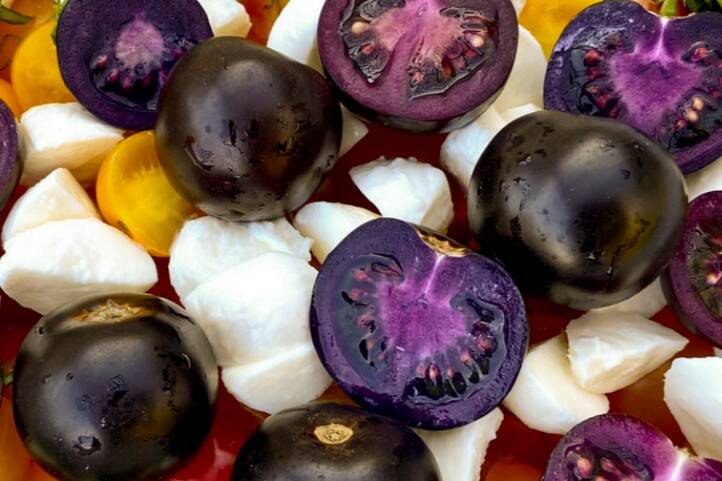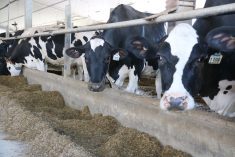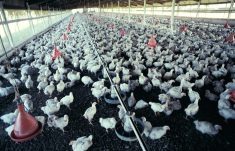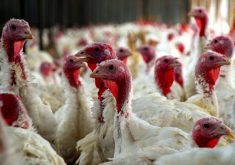Of all the emerging and potentially pandemic viruses, the highly pathogenic avian influenza (HPAI) virus H5N1 is one of the fiercest.
First found in Hong Kong in 1997, it has a 60 per cent mortality rate when transmitted to humans. As of August, the World Health Organization has counted 878 human cases and 458 deaths since 1997.
The past two years have seen a new strain circulate among wild birds and domestic poultry in Europe and the Americas, with high avian mortality. So far, humans appear to have been spared, with five cases recorded since early 2023.
Read Also

Introducing the purple tomato
Health Canada has approved bioengineered The Purple Tomato (TM), maybe leading to new culinary uses and health benefits?
However, international health authorities are keeping a close eye on mutations of the virus and prescribing strict measures to control its spread.
In France, health authorities are not standing idle. They’ve greenlit avian flu vaccination in the country for the first time and have introduced innovative monitoring. The country’s agricultural sector is in no mood to take risks, after the2022 outbreak resulted in the slaughter of 21 million birds and 1.5 billion euros in cost.
Health services mandated to depopulate barns were so overwhelmed by the scale of the task that many farmers had to euthanize poultry themselves, sometimes with no other means than cutting off ventilation in the buildings. These culls undermined not only the viability of the poultry industry, but also animal welfare standards and farmer morale.
French health authorities imposed containment and biosecurity measures to protect farms from transmission by wild birds. As highlighted in a report by the French National Assembly, these measures have had a significant negative impact on small free-range poultry farms, as large industrial operations were more easily able to integrate the costs.
The Confédération Paysanne, France’s progressive farmers’ union, negotiated with the health authorities for measures adapted to small-scale outdoor farming.
Both the Assembly’s rapporteurs and the farmers’ unions point out that genetic diversity on small farms can provide a form of immunity against emerging viruses. This is not the case with closed farms, where biosecurity measures can accentuate the vulnerability of poultry, which are genetically standardized and reliant on antibiotics.
After the massive slaughters of spring 2022, poultry farmers have asked health authorities to make avian flu vaccination accessible.
READ MORE: Bird flu alarm drives world towards once-shunned vaccines
Until recently, European regulation prohibited such vaccination, as it makes it impossible to know whether exported poultry are virus free. That ban was lifted this year.
In Asia, high poultry consumption countries such as China and Vietnam vaccinate flocks against bird flu, while those with high exports, such as Thailand, do not. In France, 40 per cent of the poultry sector’s value comes from exports, even though half the poultry meat consumed is imported. Only birds raised in French zoos are vaccinated.
The French National Agency for Health Safety, Anses, has tried experiments on the vaccination of ducks that carry avian flu viruses asymptomatically. These experiments were first made on small farms in southwest France, then in animal houses at a laboratory in Brittany.
The results were sufficiently positive for the agriculture ministry to announce a vaccination campaign for farmed ducks in autumn 2023, allowing for a manufacturing time of six to eight months.
The technical difficulty of vaccinating poultry lies in their short lifespan compared to other farm animals and the fact that two doses are required. Farmers say the first dose can be injected at birth.
Then there is cost. Pharmaceutical companies estimated 75 per cent of the cost is due to vaccine handling and post-vaccination follow-up.
Vaccination cannot be carried out on a large scale in France because of the diversity of avian species and viral strains.
Anses has issued the following recommendations:
- Vaccination of ducks as a preventive and experimental measure.
- Vaccination of poultry in the event of an H5N1 outbreak as an emergency measure.
- When a bird flu outbreak is detected in vaccinated areas, only the affected farm should be culled, not those nearby.
Experts point out that vaccination will not enable health authorities to avoid other sanitary measures, such as surveillance of virus strains in normal times and culling in emergencies. Vaccination mishaps risk releasing new strains of H5N1, which can mutate and amplify in the ecological niche opened by the destruction of other strains.
The DIVA (Differentiating Infected from Vaccinated Animals) system is prescribed by health authorities to distinguish between viruses introduced by vaccination and those that herald a new outbreak of infection. This system may be inspired by measures adopted in Hong Kong, where unvaccinated chickens are placed at farm entrances to act as sentinels.
The Chinese term shaobingji refers to these chickens as “soldiers,” who sound the alarm on the presence of the virus.
Against a backdrop of climate change, which is also affecting wild birds’ migratory trajectories, poultry farmers can play the role of sentinels by reporting cases of sick birds found in their fields. The French Office for Biodiversity and the League for the Protection of Birds have pointed out that the number of wild birds carrying bird flu has increased to such an extent that wildlife specialists will be unable to count them.
Experts are not yet talking about vaccinating wild birds against influenza, something that would be technically impossible and morally dubious. However, bird flu has forced health authorities to innovate in prevention and containment strategies and has also blurred the divide between livestock management and wildlife surveillance.
— Frédéric Keck is a researcher with the Laboratory of Social Anthropology at Collège de France in Paris. This article originally appeared in The Conversation.















